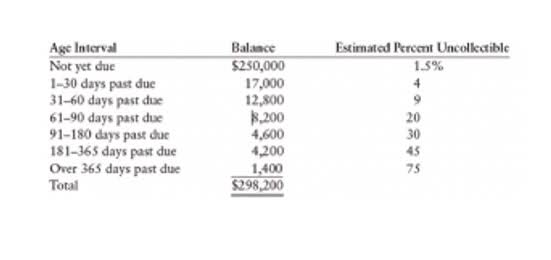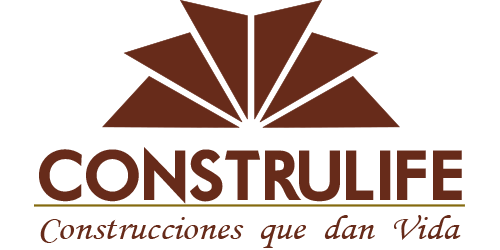Content

As a lender or investor comparing different companies’ creditworthiness—or a manager comparing different years or quarters—it is important to apply consistent criteria when calculating DSCR. As a borrower, it is important to realize that lenders may calculate DSCR in slightly different ways. The debt-service coverage ratio is a measure of the cash flow available to pay current debt obligations. HUD.Loans is a private company owned by Janover Inc. and not a government agency. Contact us today at learn more about how our team can help finance your next multifamily investment. For this reason, DSCR is generally seen as a more comprehensive measure of a company’s ability to repay its debts.

Net operating income or NOI, for example, is typically calculated using earnings before interest, taxes, depreciation, and amortization for DSCR calculations. This means that taxes, interest, and other costs from the NOI calculation should not be deducted before entering it into the DSCR formula. While DSCR is the most commonly used ratio to assess a company’s ability to repay its debts, it’s not the only one. The interest coverage ratio is another financial ratio that can be used for this purpose. Based on these numbers, the business’ DSCR would be 1.33, which is a strong ratio. This means that the business has enough income to cover its debt payments and then some. The NOI includes all rental income plus other income (e.g., parking fees, storage fees, laundry or vending machine income, billboard/signage fees, etc.).
Understanding the Capital Stack in a Real Estate Investment
When you login first time using a Social Login button, we collect your account public profile information shared by Social Login provider, based on your privacy settings. We also get your email address to automatically create an account for you in our website.
- Hence, having 1 as the DSCR does not allow bearing any additional costs or obligations.
- And of course, just because the DSCR is less than 1 for some loans, this does not necessarily mean they will default.
- This ratio is useful as a comparative tool to analyze similar investments under consideration.
- Items excluded from necessary operating expenses include capital expenditures , depreciation, and the debt service or mortgage payment.
- Learn more about debt sizing here and learn to build macros automate the process here.
- While the DSCR is a simple calculation it’s often misunderstood and it can be adjusted or modified in various ways.
Debt service coverage ratio – or DSCR – is a metric that measures the borrower’s ability to service or repay the annual debt service compared to the amount of net operating income the property generates. At a minimum, it is the principal and interest payment owed to the lender each month. A lender’s DSCR calculation might include property taxes and insurance, as well. If these are included as debt obligations, they should not be factored into the operating expenses when calculating total NOI. They should only be accounted for once, on either side of the DSCR equation. The debt service coverage ratio, often referred to as «DSCR,» is a metric that both investors and lenders use to determine whether the income generated by a property can sufficiently support its debt obligations.
Determining Your Debt Service Coverage Ratio
While there’s no industry standard of a good debt service coverage ratio in real estate, many lenders and conservative real estate investors will look for a DSCR of at least 1.25. Additionally, a strong DSCR may help improve a business’s likelihood of being approved for loans with favorable terms, including higher amounts, longer repayment timelines and lower interest rates.
What is a good debt to service coverage ratio?
The debt service coverage ratio real estate lenders want to see is 1.25 to 1.50 because, for them, that is a good debt service coverage ratio. This ratio means the borrower has sufficient debt coverage for paying a loan. If the DSCR is too low, a lender may require an interest reserve.
Debt Service Coverage Ratio, or DSCR, is a measurement of an entity’s cash flow vs. its debt obligations. In multifamily and commercial real estate, that entity is typically an income-producing property, while in corporate finance, the entity is usually a business or corporation. If an entity has a DSCR less than 1, its income is less than its monthly debt obligations. In contrast, if an entity has a DSCR of 1, then its income is equal to its monthly debt obligations, while if it has a DSCR of more than 1, its income is greater than its monthly debts.
What is a debt service coverage ratio?
The operating income is found by subtracting the operating expenses from the firm’s gross profit. Assuming the company was looking to take out a Commercial Mortgage to support the property acquisition, the mortgage lender would need to add back rent to the numerator to understand the going-forward cash flow. Theinterest coverage ratio indicates https://www.bookstime.com/ the number of times that a company’s operating profit will cover the interest it must pay on all debts for a given period. This is expressed as a ratio and is most often computed on an annual basis. Peggy James is a CPA with over 9 years of experience in accounting and finance, including corporate, nonprofit, and personal finance environments.
In most jurisdictions, income taxes owing to the regional or federal governments count as “super-priority” liabilities (meaning they rank above even the senior-most secured creditors). Total-debt-to-total-assets is a leverage ratio that shows the total amount of debt a company has relative to its assets. Even for a calculation this simple, it is best to use a dynamic formula that can be adjusted and recalculated automatically. Debt Service Coverage Ratio One of the primary reasons to calculate DSCR is to compare it to other firms in the industry, and these comparisons are easier to run if you can simply plug in the numbers. Entities or individuals with good DSCR scores are generally eligible for loans and receive favorable terms compared to those with bad DSCR scores. Conditions in the broader economy, such as interest rates, can affect a lender’s willingness to extend credit.
Debt Service Coverage Ratio (DSCR) Meaning
The general concept of taking cash flow and dividing by debt service is the same. However, instead of looking at NOI for a commercial property, we need to substitute in some other measure of cash flow from the business available to pay debt obligations. Given the importance of debt service coverage, there is surprisingly no universal definition used among banks and sometimes there is even disagreement within the same bank.

As previously mentioned, a DSCR of greater than 1 shows that you have sufficient income to cover your current debt obligations. A DSCR below 1, however, shows that you do not have enough cash on hand to comfortably cover your loan payments. The Debt Service Coverage Ratio is a ratio of a property’s annual net operating income and its annual mortgage debt, including principal and interest. Lenders use DSCR to analyze how much of a loan can be supported by the income coming from the property as well as to determine how much income coverage there will be at a specific loan amount. Lenders use a DSCR to help qualify real estate investors for a loan because it can easily determine the borrower’s ability to repay without verifying income.



